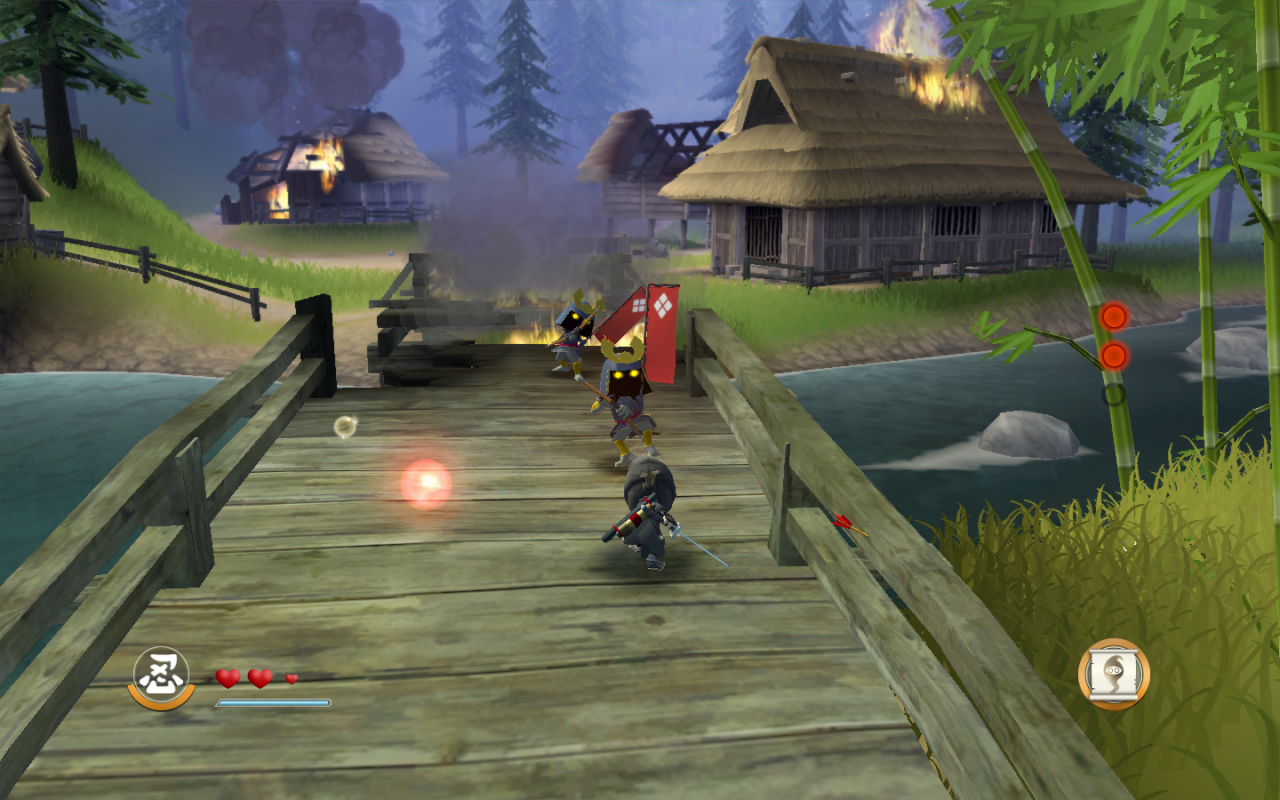Best free mini games for low spec PCs: Who says low-end rigs can’t enjoy awesome gaming? Forget those demanding AAA titles; we’re diving deep into a world of fantastic free mini-games perfectly optimized for less powerful PCs. Get ready to discover hidden gems that don’t compromise on fun, proving that great gameplay isn’t always about high-end specs. This is your ultimate guide to unlocking a world of gaming possibilities, even with a budget-friendly setup.
From puzzle adventures to adrenaline-pumping arcade challenges, we’ll explore diverse genres bursting with captivating mini-games. We’ll uncover the secrets behind their optimization, reveal the best platforms to find them, and even share expert tips to squeeze every ounce of performance from your low-spec PC. Prepare to be amazed by the sheer variety and quality of free games available, transforming your gaming experience from frustrating to fantastic.
Introduction to Low-Spec PC Gaming: Best Free Mini Games For Low Spec PCs
The world of PC gaming often conjures images of high-end rigs boasting cutting-edge graphics cards and powerful processors. However, a significant portion of gamers operate on systems with more modest specifications, facing unique challenges and limitations. This often means sacrificing visual fidelity and smooth frame rates for the sake of simply being able to play. But don’t despair, fellow low-spec gamers! There’s a whole universe of enjoyable gaming experiences waiting for you, and free mini-games are a fantastic gateway.Low-spec PCs, typically characterized by older or less powerful CPUs, limited RAM, and integrated graphics, significantly impact gaming performance.
Resource-intensive AAA titles, with their detailed environments and complex physics engines, often struggle to run smoothly, resulting in choppy gameplay, low frame rates (FPS), and potentially even crashes. This can lead to frustration and a less-than-ideal gaming experience. The limitations aren’t just about visual quality; low RAM can cause stuttering and lag, while a weaker CPU might lead to slow loading times and overall sluggish performance.
Hunting for awesome free mini games that won’t melt your low-spec PC? Look no further! Many fantastic options exist, offering hours of fun without demanding high-end hardware. One surprisingly addictive title you should check out is the cleverly designed Snacks Conveyor , a perfect example of a lightweight yet engaging game. So dive into the world of low-spec gaming and discover more hidden gems!
The Advantages of Free Mini-Games for Low-Spec PCs
Free mini-games represent a compelling alternative to demanding AAA titles. These games are often designed with lower system requirements in mind, meaning they can run smoothly even on older or less powerful hardware. Their smaller file sizes also mean faster download and installation times, a considerable benefit for those with slower internet connections. Furthermore, many free mini-games offer a diverse range of genres and gameplay styles, ensuring there’s something for everyone, regardless of their preferences.
Finding awesome free mini games that won’t crash your low-spec PC can be a challenge, but there are some real gems out there! For a fun and stylish option, check out the delightful Princesses Prom Night game; it’s surprisingly light on resources. So, next time you’re looking for a quick, enjoyable gaming break without the performance anxiety, remember there are plenty of fantastic free mini games perfect for older machines.
For example, a simple puzzle game might require minimal processing power, whereas a 2D platformer may be more demanding but still perfectly playable on a low-spec machine. This accessibility makes free mini-games an ideal entry point into the world of PC gaming for those with budget constraints or older hardware.
Game Engines and Development

Creating engaging mini-games for low-spec PCs requires careful consideration of the game engine’s performance characteristics. The right engine can significantly impact a game’s visual fidelity, responsiveness, and overall playability on less powerful hardware. Choosing wisely is crucial for delivering a smooth and enjoyable experience to players with limited system resources.Game engines are the foundational software frameworks upon which games are built.
They provide a collection of tools and functionalities that simplify the development process, including rendering graphics, managing physics, handling input, and implementing game logic. For low-spec PC gaming, selecting an engine optimized for efficiency is paramount.
Game Engine Performance Comparison
Different game engines offer varying levels of performance optimization. Some are designed for high-end graphics and complex physics, while others prioritize efficiency and compatibility with lower-end hardware. This performance disparity stems from differences in rendering techniques, physics engines, and overall code optimization. For instance, engines utilizing simpler rendering pipelines and less demanding physics calculations will generally perform better on low-spec systems.
Examples of Mini-Games and Their Engines
The choice of game engine directly impacts a mini-game’s performance. Consider these examples: A simple 2D puzzle game might be efficiently developed using Unity’s lightweight 2D tools, resulting in a smaller game file size and better performance on lower-end PCs compared to a game built with Unreal Engine 5, which is designed for visually stunning, high-fidelity 3D graphics.
Conversely, a fast-paced, graphically simple arcade game might be better suited to a simpler engine like GameMaker Studio 2, allowing for smooth gameplay even on very low-spec machines. A complex 3D game, however, would likely require significant optimization regardless of the engine, but engines like Godot are known for their efficiency and ease of optimization, making them suitable for resource-conscious developers.
Optimization Techniques for Low-Spec Gaming
Playing games on a low-spec PC doesn’t mean sacrificing all the fun. With a little know-how, you can significantly improve your gaming experience by optimizing your game settings. This involves understanding how different settings impact performance and making strategic adjustments to prioritize smooth gameplay over high-fidelity visuals. Let’s dive into the techniques that can transform your low-spec gaming experience.
Optimizing your game settings is a balancing act between visual quality and performance. The goal is to find the sweet spot where your games run smoothly without looking completely unplayable. This involves tweaking several settings, each with a varying impact on your system’s resources.
Resolution and Refresh Rate
Lowering the resolution is one of the most effective ways to boost performance. A lower resolution means the game renders fewer pixels, reducing the workload on your GPU. For example, switching from 1920×1080 (1080p) to 1280×720 (720p) can dramatically improve frame rates. Similarly, reducing your refresh rate (e.g., from 60Hz to 30Hz) can also free up processing power.
While the image might appear slightly less sharp and smoother, the performance gain can be substantial.
Graphics Settings
Many games offer a wide range of graphical settings that directly affect performance. These settings control various aspects of the visual fidelity, from the detail level of textures to the complexity of shadows and lighting effects. Generally, turning down settings like shadows, anti-aliasing, ambient occlusion, and texture quality will lead to a noticeable performance boost. Experimenting with different settings will help you find the best balance between visual appeal and frame rate.
For instance, lowering shadow quality from “High” to “Medium” or “Low” can significantly reduce the load on your GPU.
Texture Quality
Texture quality directly impacts the detail of in-game surfaces. High-resolution textures look better but require more VRAM (video RAM). Reducing texture quality from “High” to “Medium” or “Low” can free up significant VRAM, leading to smoother gameplay, especially on systems with limited VRAM. Consider this a crucial setting to adjust for noticeable performance improvements.
Step-by-Step Guide to Optimizing Game Settings
Follow these steps to configure your game settings for optimal performance on a low-spec PC. Remember, the ideal settings will vary depending on the game and your specific hardware.
- Lower the Resolution: Start by reducing the resolution to 720p (1280×720) or even lower, if necessary. This significantly reduces the rendering load on your GPU.
- Reduce Refresh Rate: Lower your monitor’s refresh rate to 30Hz or 60Hz, depending on your preference and the game’s responsiveness. A lower refresh rate will make the game less smooth, but it will improve performance.
- Turn Down Graphics Settings: Start by lowering the settings that have the biggest impact: shadows, anti-aliasing, ambient occlusion, and texture quality. Set these to “Low” or “Medium”.
- Adjust Other Settings: Explore other settings such as view distance, effects quality, and post-processing effects. Reducing these can further improve performance.
- Monitor Performance: Use in-game performance monitoring tools or external applications (like MSI Afterburner) to track your FPS (frames per second) and GPU usage. This allows you to fine-tune settings based on real-time performance data.
- Close Background Applications: Before launching a game, close any unnecessary background applications that might be consuming system resources.
Finding and Accessing Free Mini-Games
Finding free, high-quality mini-games compatible with low-spec PCs might seem daunting, but with the right resources, it’s surprisingly easy. Many platforms offer a treasure trove of games designed specifically for older or less powerful machines. Knowing where to look and what safety precautions to take is key to a smooth and enjoyable gaming experience.The internet is a vast landscape, and not all websites are created equal.
Prioritizing reputable sources significantly reduces the risk of encountering malware or encountering games that don’t live up to their promises. Always be cautious and take the necessary steps to protect your computer.
Reliable Platforms for Free Mini-Games
Several online platforms specialize in hosting free mini-games, catering to a wide range of preferences and system requirements. These platforms often have robust filtering systems, allowing you to easily find games compatible with low-spec PCs. Remember to always check the system requirements before downloading.
| Platform Name | Link (Descriptive Text) | Description | Low-Spec Compatibility |
|---|---|---|---|
| GameJolt | Website dedicated to indie game developers | A large community-driven platform hosting a wide variety of indie games, many of which are designed for low-spec systems. Expect a mix of genres and styles. | Good – Many games explicitly state low-spec compatibility. |
| Itch.io | A platform supporting indie game creators | Similar to GameJolt, Itch.io features a vast library of indie games, including many free titles. The platform emphasizes community and allows developers to set their own pricing. | Good – Many developers cater to low-spec players, often offering different versions or settings. |
| Kongregate | A long-standing online gaming portal | Kongregate has been around for a long time, hosting a large selection of browser-based and downloadable games. While not all games are low-spec friendly, many older titles are. | Fair – Requires careful checking of system requirements; many older games are suitable. |
| Newgrounds | A hub for animation, games, and more | Known primarily for its animation content, Newgrounds also features a collection of games, some of which are simple and compatible with low-spec machines. | Fair – Focuses on Flash-based games (many older titles), but requires careful review of system specs. |
Safety Precautions for Downloading Free Games
Downloading games from unofficial sources always carries a risk. To minimize potential harm to your computer, it’s crucial to follow these safety guidelines.Always download games from trusted sources, such as those listed above. Avoid downloading from unknown or suspicious websites. Before installing any game, scan the downloaded file with a reputable antivirus program. Read user reviews and check the game’s system requirements before downloading to ensure compatibility and avoid wasting time and bandwidth.
Be wary of games that promise unrealistic features or require excessive permissions. Finally, keep your operating system and antivirus software up-to-date. Regular updates often include patches that address security vulnerabilities.
Community and Resources

Navigating the world of low-spec PC gaming can feel isolating at times, but thankfully, a vibrant and supportive online community exists to help players find, enjoy, and optimize their gaming experiences. These communities offer invaluable resources, sharing knowledge and fostering a collaborative environment where everyone can contribute and benefit. Joining these groups can significantly enhance your low-spec gaming journey.Connecting with fellow low-spec gamers provides access to a wealth of information and support not readily available elsewhere.
These communities act as hubs for sharing tips, tricks, and recommendations, helping players overcome technical challenges and discover hidden gems. The shared experiences and collaborative problem-solving are key aspects that make these online spaces so beneficial.
Online Communities for Low-Spec Gamers
Dedicated forums and online communities specifically cater to low-spec PC gaming. Imagine a digital gathering place where users discuss compatible games, share optimization strategies, and recommend lesser-known titles perfectly suited for less powerful machines. These communities often feature dedicated sections for specific game engines, allowing for focused discussions on performance tweaks and game-specific solutions. Examples include online forums that are built around specific game engines or general gaming communities with dedicated sub-forums for low-spec gaming.
These platforms frequently host threads dedicated to sharing lists of free mini-games optimized for low-end PCs, complete with user reviews and performance reports.
Resources for Sharing Tips and Tricks
Numerous online resources exist where users share their expertise and experiences with low-spec gaming. Think of websites and social media groups where users post detailed guides on optimizing game settings, creating custom configurations, and identifying free mini-games that run smoothly on older or less powerful hardware. These resources might include detailed tutorials with screenshots demonstrating specific optimization techniques, or simple lists of recommended games categorized by system requirements.
Some resources even offer curated collections of free mini-games, categorized by genre and system requirements, making it easier for low-spec gamers to find suitable titles. These collaborative efforts provide a significant advantage for players seeking to maximize their gaming potential without high-end hardware.
Benefits of Joining Low-Spec Gaming Communities, Best free mini games for low spec PCs
The benefits of joining these communities are substantial. First, access to a vast library of user-generated content, including optimized game settings, custom configurations, and recommendations for free mini-games, significantly expands gaming possibilities. Second, the ability to connect with others facing similar challenges fosters a sense of community and shared experience. This creates a supportive environment where users can readily obtain assistance and advice, overcoming obstacles that might otherwise prove insurmountable.
Third, participating in these communities allows users to contribute their own knowledge and expertise, enriching the shared resource pool and helping others. The collaborative nature of these communities strengthens the overall low-spec gaming experience for everyone involved.
Illustrative Examples of Mini-Games
Low-spec PCs don’t mean low-fun! Many fantastic mini-games are designed to run smoothly on older or less powerful machines, showcasing impressive creativity within technical limitations. Let’s explore three examples that demonstrate the diverse possibilities of low-spec gaming.
Cave Explorer
Imagine a pixel-art adventure set deep within a mysterious cave system. The visuals are reminiscent of classic 8-bit games, with simple but charming sprites representing the player, various crystals, and lurking creatures. The color palette is limited, but effectively uses contrast to create a sense of depth and atmosphere within the confined spaces of the cave. The player navigates using simple arrow keys, collecting glowing crystals and avoiding shadowy enemies.The visual style of Cave Explorer embraces a retro aesthetic, employing a limited color palette of deep blues, greens, and oranges to evoke the feeling of a dimly lit cavern.
The pixel art is intentionally simplistic, focusing on clear silhouettes and easily recognizable shapes. This deliberate simplicity ensures the game runs smoothly even on very low-spec hardware. The lack of detailed textures and complex animations significantly reduces processing demands.The game’s technical design prioritizes efficient sprite rendering and collision detection. Simple algorithms handle movement and interactions, minimizing CPU and GPU load.
The small game world and limited number of assets further contribute to its low system requirements, making it accessible to a wide range of players.
Block Breaker Blitz
This fast-paced arcade game features a minimalist aesthetic, focusing on clean lines and vibrant colors. The gameplay is straightforward: the player controls a paddle at the bottom of the screen to bounce a ball and break falling blocks. Each block is a single color, creating a visually satisfying cascade of color as they shatter.Block Breaker Blitz boasts a strikingly clean and modern visual style.
The blocks are simple geometric shapes, each rendered in a flat, solid color. The background is a simple gradient, avoiding any complex textures or animations. This intentional minimalism reduces the game’s visual complexity, allowing for a high frame rate even on older hardware. The color palette is bold and saturated, enhancing the game’s visual appeal without demanding significant processing power.The game’s technical simplicity is key to its low system requirements.
The game uses simple physics calculations for ball movement and collision detection, avoiding complex simulations. The minimal use of visual effects and the lack of detailed textures ensure the game runs smoothly on a wide range of systems. The entire game is designed to be lightweight and efficient.
Zen Garden
This relaxing game invites players to create and cultivate their own miniature zen garden. The visual style is serene and minimalist, using muted earth tones and subtle animations to create a calming atmosphere. The player can arrange rocks, rake the sand, and plant various miniature plants, creating a personalized space for contemplation.Zen Garden’s visual style is characterized by its peaceful and calming aesthetic.
The color palette is primarily composed of muted greens, browns, and grays, reflecting the natural world. Animations are slow and deliberate, adding to the game’s tranquil atmosphere without placing a heavy burden on the system. The textures are simple, focusing on realistic representation of sand, stone, and plants, but without overly complex details.Technically, Zen Garden leverages simple 2D rendering techniques and minimal animations to achieve its low system requirements.
The game world is relatively small and static, reducing the processing demands associated with large, dynamic environments. The simple particle effects used to simulate raking sand are computationally inexpensive, ensuring smooth performance on low-spec machines. The game’s focus on simplicity in both visuals and mechanics makes it incredibly accessible.


